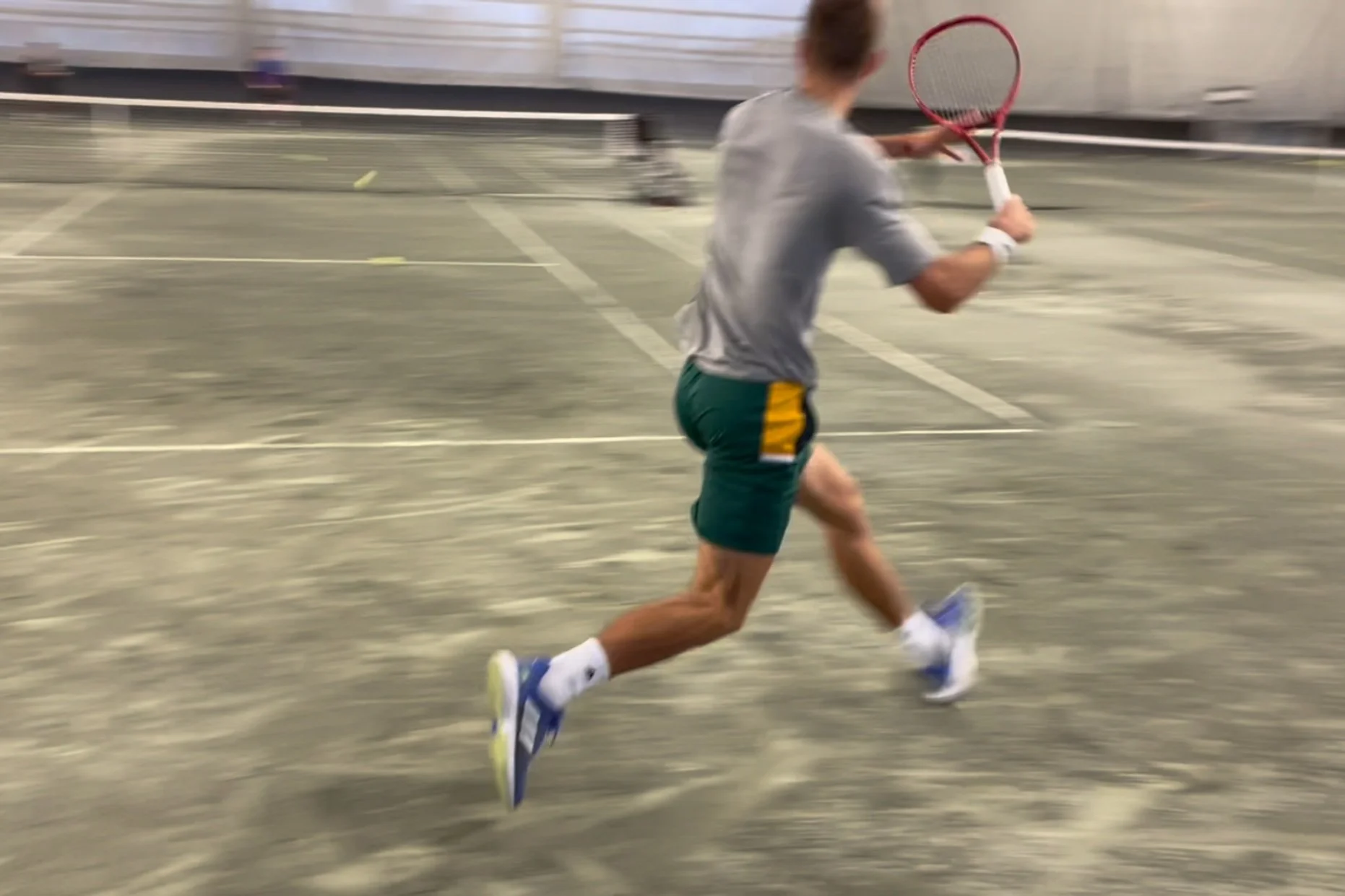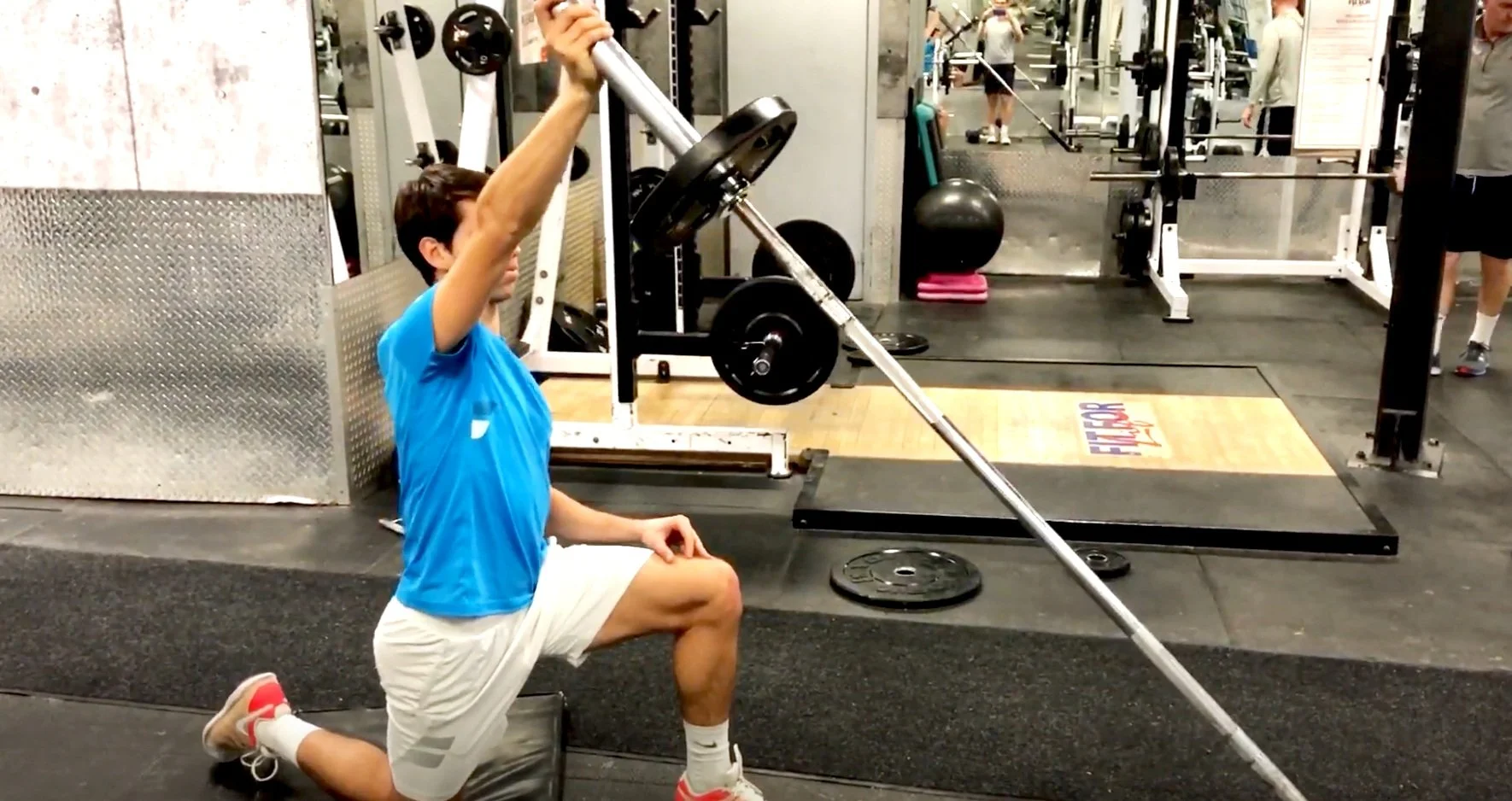Many in tennis associate shoulder health with resistance band exercises. Listen to coaches and trainers talk about shoulder strength or injury prevention with their players and you’ll surely hear things like “are you using your bands daily?” or “make sure to do ‘x’ or ‘y’ band exercise”. But do band exercises work in the manner that they’re spoken about?
I’d like to offer my take on the matter and suggest 2 other strength training methods - light weight and moderate/heavy strength exercises.
t’s no surprise that I’m a fan of strength training (as long time readers of Mattspoint would know).
But strength training is an more of an umbrella term than just one type of training modality. Because there's just so many different ways that we can lift weights. Here are a few examples:
Lift light weights fast - explosive (or speed) strength. Lift heavy weights slow (with a fast/explosive intention) - maximum strength. Lift moderate weights fast - strength speed (or rate of force development).
This is the third part of this 3-part series on mobility & flexibility training for tennis. The first post was an introductory post that defined what mobility truly is (read that here) and highlighted some of the problem areas for tennis players - with a special emphasis on the hip and shoulder. The second part went into more specifics regarding the science of stretching and it's role in the overall development of flexibility (we also dispelled the myth that flexibility is only attainable by the special few). And it included detailed info on how to improve both range of motion (ROM) and strength while presenting a shoulder internal rotation stretch example. You can read that article here.
In this post, we'll primarily be looking at the differences between dynamic and static stretching. More specifically, we'll outline what role dynamic stretching (DS) and static stretching (SS) play in the warm-up of the tennis player and how to effectively implement each type of stretching into your pre-match/practice routine. Let's go!
Last week I presented in front of the BTV (Bavarian Tennis Verband) - it’s one of the biggest associations in Germany and many of the top junior tennis coaches were in attendance. The topic - how we can use off-court training strategies to accelerate on-court development. I had 3 young junior players helping me during the practical component - going through a series of jumps, bounds, throws, bodyweight exercises and so on. They were 12-13 years old and apparently, some of the best young talents in the country (I never met them previously and had never seen them play or train).
How many players on tour do we hear referring to ‘health’ as being a big part of their success? Many of the top players on both the women’s tour and men’s tour exclaim that being healthy and fit is a big part of their success. But the reverse is also true. How many players have inconsistent results when they aren’t in top form? Obviously it’s impossible to be in top form all the time, but when the balance tilts the other way, that’s usually when injury/illness could be lurking around the corner.
BOTH Andy Murray and Novak Djokovic have been in the news of late with elbow injuries. While Novak is back competing, Andy is still on the sidelines with a suspected "tear" around the elbow (no further details have been mentioned). Both missed the Miami Open this year and while they'll likely be back in form soon, I thought it was a good time to discuss why elbow injuries happen and some ideas on what we can do about them.
A fairly recent retrospective study from Sports Health: A Multidisciplinary Approach analyzed serve volume in professional and junior tennis players. The researchers sought out to find how many serves are hit in a set (and match) by pros and juniors. The aim of the study was to use this serve data to develop an interval serve & groundstroke training program for elite tennis players. Although others have attempted to devise this type of program for tennis players, this is the first to my knowledge that has looked at more recent serve data while at the same time developing a program that took into account intensity (as a % of max speed) rather than just volume (i.e. number of serves).
The differences between junior players and pro players are more than meets the eye. Sure the pros have more experience, they’re fitter, have greater mental toughness and so on...but one area that the pros really excel at, especially compared to the juniors, is their warm-up. Now you may be thinking to yourself, “they are pros, it’s their job to have a thorough warm-up”. But the warm-up is much more than just a warm-up...it could make the difference between winning and losing, incurring an injury or performing at your very best.
This week I’ll be traveling to London UK to take part in the Functional Range Conditioning (FRC) course (aka an excruciating experience on your hips...or so I've been told). The FRC course - created by Dr. Andreo Spina, owner and founder of Functional Anatomy Seminars - is a system of mobility training rooted in scientific research. I’ve always integrated mobility & flexibility work with my athletes and have a pretty good understanding regarding its underlying mechanisms but why not learn from someone who has devoted their life’s work to improving mobility, joint function and athletic performance. And...he’s worked with a number of pro athletes, including world no. 4 Milos Raonic (see video below).
There’s no question the shoulder takes a beating in tennis. I mean, players use it on every shot. Whether that’s to create lots of torque to hit a big forehand or to stabilize the shoulder when punching a volley...the shoulder has many functions and roles. But perhaps the biggest toll on the shoulder occurs in a movement you wouldn’t normally consider...the deceleration phase (aka the follow-through phase) of the serve. This is the moment after impact where the posterior muscles of the shoulder act in an eccentric manner to essentially stop the head of the humerus from being dislodged from the glenoid fossa (aka think arm dislocating from shoulder...that wouldn’t be fun). Ellenbecker & Kovacs (2008) call the deceleration phase “the most violent of the tennis serve”. That’s a pretty big statement, and probably something that needs to be considered in the training of the tennis shoulder. But why exactly is this phase of the serve so critical? What type of strength is necessary? And what kind of exercises can tennis players incorporate into their program to optimize the serve keep the shoulder healthy? We’ll explore all of these points in this article, so read on.
A few weeks back I wrote an article about strength training for tennis. More specifically, I wrote that physical training for tennis should stop focusing on “fancy drills” that may appear useful on the outside. Among other qualities (not the focus of this article), physical training for tennis should include a properly planned and executed strength training protocol. In this post, I’m going to outline the mechanical demands of tennis - this will hopefully provide a better understanding as to why strength training is important for tennis. And a brief application of strength training will be linked to each tennis demand to provide further context.












